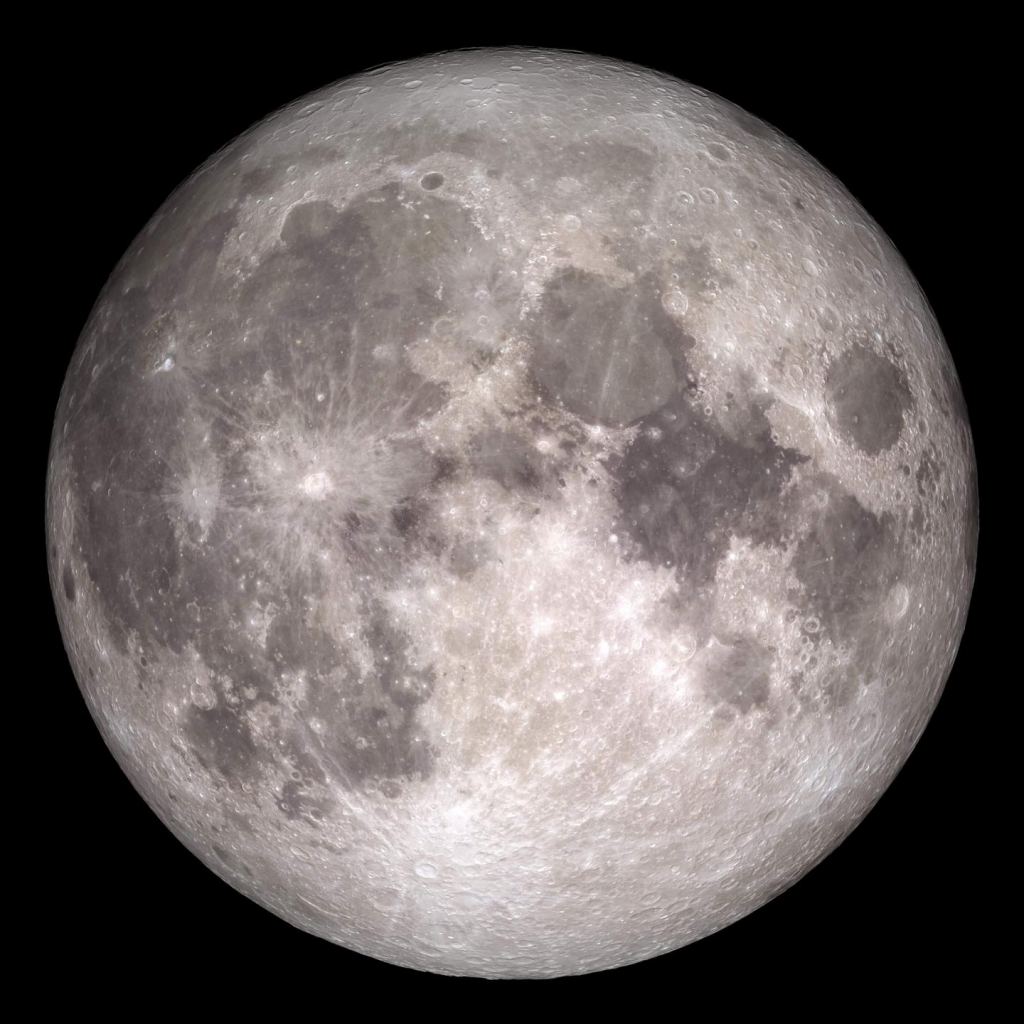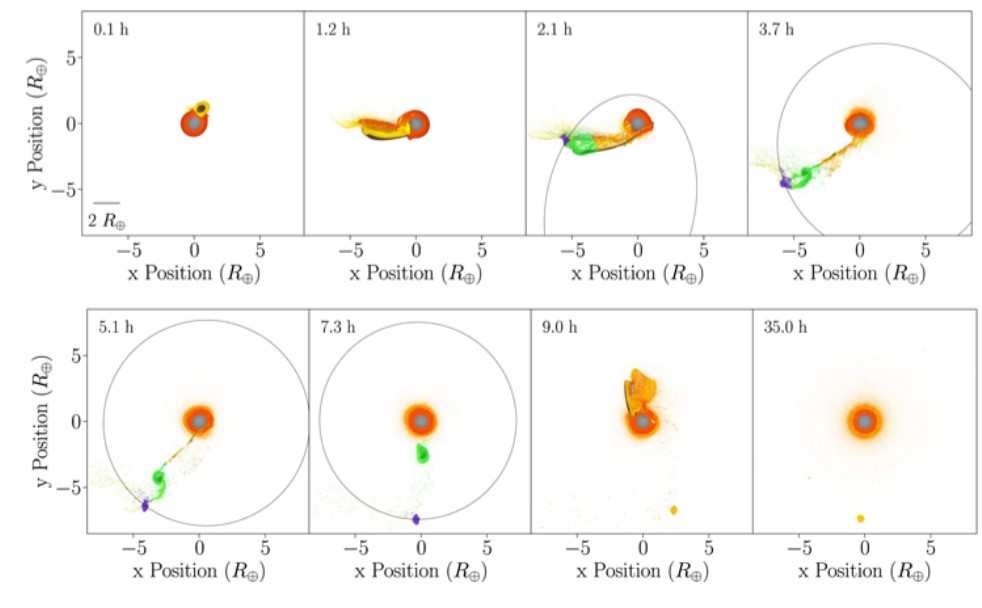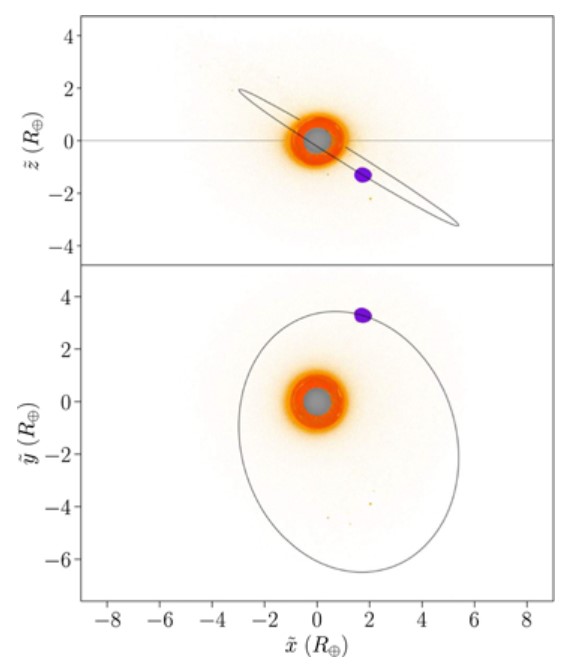The Moon Might be One Large Chunk that was Blasted Off the Earth Billions of Years Ago
By Evan Gough
Where did the Moon come from?
The widely-accepted view is that the Moon is a result of an ancient collision between the young Earth and a Mars-sized planet named Theia about 4.5 billion years ago. The impact melted Earth and Theia and sent molten material into orbit around Earth, where it formed a rotating torus of molten rock. That rock eventually coalesced into the Moon. It’s called the Giant Impact Hypothesis, and isotopic evidence from Apollo moon rocks illustrates the link between Earth and its Moon.
Case closed?
Not so fast. There’ve always been problems with this hypothesis. Can a new study answer them?
In our quest to understand Nature, the Moon is a primary target for many of us. We look up at it when we’re children and wonder what it is. We wonder where it came from and why it’s there. A well-meaning relative might tell us that a God put it there. But if that’s where your curiosity ends, you’re probably not a Universe Today reader.
Throughout history and even prehistory, people in different cultures have wondered about the Moon. Maoris thought it was the husband of all women since it controls their menstrual cycles. Siberians believed that a monster named Alklha explained the Moon. It eats a bit of it each night which makes it disappear. But the Moon disagrees with Alklha, and the monster vomits it up bit by bit, making it reappear. (If there’s an eclipse, throw rocks at the Moon to scare Alklha away.) Some indigenous people on the African continent thought the Moon goddess was a companion to the Sun god, and when they met and made love, there was an eclipse. Something to aspire to in our personal lives.

But that was all before science got going. Science improved things a little, like when the British astronomer William Herschel said the Moon was inhabited, and he watched through his telescope as the Martians constructed things. He was wrong, but at least he was using a telescope. And after World War 2, some thought that Nazi astronauts had already landed on the Moon and were living in a top-secret base. Only slightly more plausible.
Lunar science took a giant step forward during NASA’s Apollo missions. Between 1969 and 1972, six Apollo missions brought back 382 kilograms (842 pounds) of lunar material. Scientists found no evidence of gods or supernatural beings. Nor of lovemaking so passionate that it caused an eclipse.

But they did find solid scientific evidence, and chief among the evidence was isotopes of oxygen. Scientists found that oxygen isotopes contained inside Moon rocks were uncannily similar to oxygen isotopes in Earth rocks. Could it be a coincidence?
Since then, generations of scientists have developed the Giant Impact Hypothesis. But they’ve also pointed out the holes in that hypothesis. One of the holes is in the initial finding that Earth and the Moon share isotope signatures. That means they had to come from the same source. But for that to happen, the impactor would’ve had to have the same isotope signature. That’s not likely because lighter elements were dispersed by the stellar wind in the early, still-forming Solar System. That’s why the inner planets are heavier rocky planets, while the outer planets are gas planets. The stellar wind couldn’t move the heavy elements so easily. So if Theia came from a region more distant from the Sun than Earth, it would have a different composition, and that should be reflected in the Moon.

There’s lots of evidence to support the current Giant Impact Hypothesis (GIH) and many unanswered questions. The Moon, the first target in our quest to understand the celestial, is still a hot topic of study.
That’s where this new study comes in. It still posits an impact as the source of Earth’s Moon, but thanks to improvements in supercomputer simulations, it arrives at a different type of impact.
The study is “Immediate Origin of the Moon as a Post-impact Satellite,” published in The Astrophysical Journal Letters. The lead author is Jacob Kegerreis from the Institute for Computational Cosmology in the Physics Department at Durham University. Kegerreis is also associated with NASA’s Ames Research Facility.
The researchers used advances in computational power to run simulations of impacts with Earth at higher resolutions than ever before. These simulations show that the impact between Earth and Theia was much different than the Giant Impact Hypothesis. Instead of an impact casting a vast amount of molten material into space that condensed into the Moon over a longer timeframe, the simulation shows that the impact created the Moon by sending a single satellite immediately into orbit.
If true, this is a massive shift in understanding, like finding out that Alklha isn’t real.
The researchers ran hundreds of simulations of impacts and varied impact angles, speeds, planet spins, masses and more. They found that previous lower-resolution simulations could miss essential aspects of massive collisions. A press release announcing the work said, “… qualitatively new behaviours emerge in a way that wasn’t possible in previous studies.”
The simulations showed that the material was sent into space when the impact occurred, just like in the GIH. But the material never formed a torus of rotating molten rock. Instead, the proto-satellite that would become the Moon separated from the remnant of the impactor. The remnant from the impactor also forms two bodies: an inner remnant and an outer remnant. The inner remnant transfers its angular momentum to the outer remnant and the ejected Earth and Theia material forming the proto-Moon. Then the inner remnant falls back to Earth, leaving the Moon.

The researchers released an animation of their impact simulations that illustrates the impact and the Moon’s formation.
Kegerreis and his research colleagues found that their immediate satellite scenario can answer some questions that the GIH can’t.
The main roadblock to acceptance of the GIH is the isotopic similarity between Earth and the Moon. A cataclysmic impact with another planet from a distant part of the Solar System can’t produce the kind of isotopic similarity between the Earth and the Moon.
But the new scenario can explain it. Instead of melting and mixing the material from Theia and Earth, larger amounts of Earth material are contained in the Moon’s outer layers. And if the material ejected from Earth wasn’t entirely molten, then the early Moon wasn’t completely molten either. That could explain the Moon’s thin crust, another obstacle the GIH has to clear.
There’s also the issue of the Moon’s orbit. It’s tilted relative to Earth’s equator by about 5 degrees, and the instant satellite explanation can account for that. “In contrast,” the authors explain, “we find that an impact onto a spinning target with angular momentum misaligned to that of Theia’s orbit can readily produce significantly inclined debris, including a satellite, as illustrated in Figure 5.”

The team’s simulations showed that instant satellite creation depends on several factors like impact angles and speed and spin of Theia and Earth. But interestingly, the temperature and internal structure of both bodies don’t change results much.
One of the problems with the GIH is that there’s no self-consistent model that starts with a giant impact and creates debris that results in a single Moon. But these higher resolution simulations have produced a single Moon. Will this be the final word?
“In conclusion,” the authors write, “high-resolution simulations reveal how giant impacts can immediately place a satellite into a wide orbit with a Moon-like mass and iron content. The resulting outer layers rich in proto-Earth material and the new options opened up for the initial lunar orbit, and internal structure could help to explain the isotopic composition of the Moon and other unsolved or debated lunar mysteries.”
While compelling in its ability to answer some long-standing questions, the instant satellite scenario doesn’t answer all of our questions. But supercomputers will keep getting more powerful, and scientists will keep improving their models.
“The likelihood and potential of this and other Moon-formation scenarios will be constrained by: more reliable models for the long-term evolution of satellite orbits, magma oceans, post-impact planets, and disks,” the authors write.
More:
- Press Release: Supercomputer simulations reveal new possibilities for the Moon’s origin
- New Research: Immediate Origin of the Moon as a Post-impact Satellite
- Universe Today: This is How You Get Moons. An Earth-Sized World Just got Pummeled by Something Huge.
The post The Moon Might be One Large Chunk that was Blasted Off the Earth Billions of Years Ago appeared first on Universe Today.

October 13, 2022 at 01:25AM
via Universe Today read more...

Post a Comment